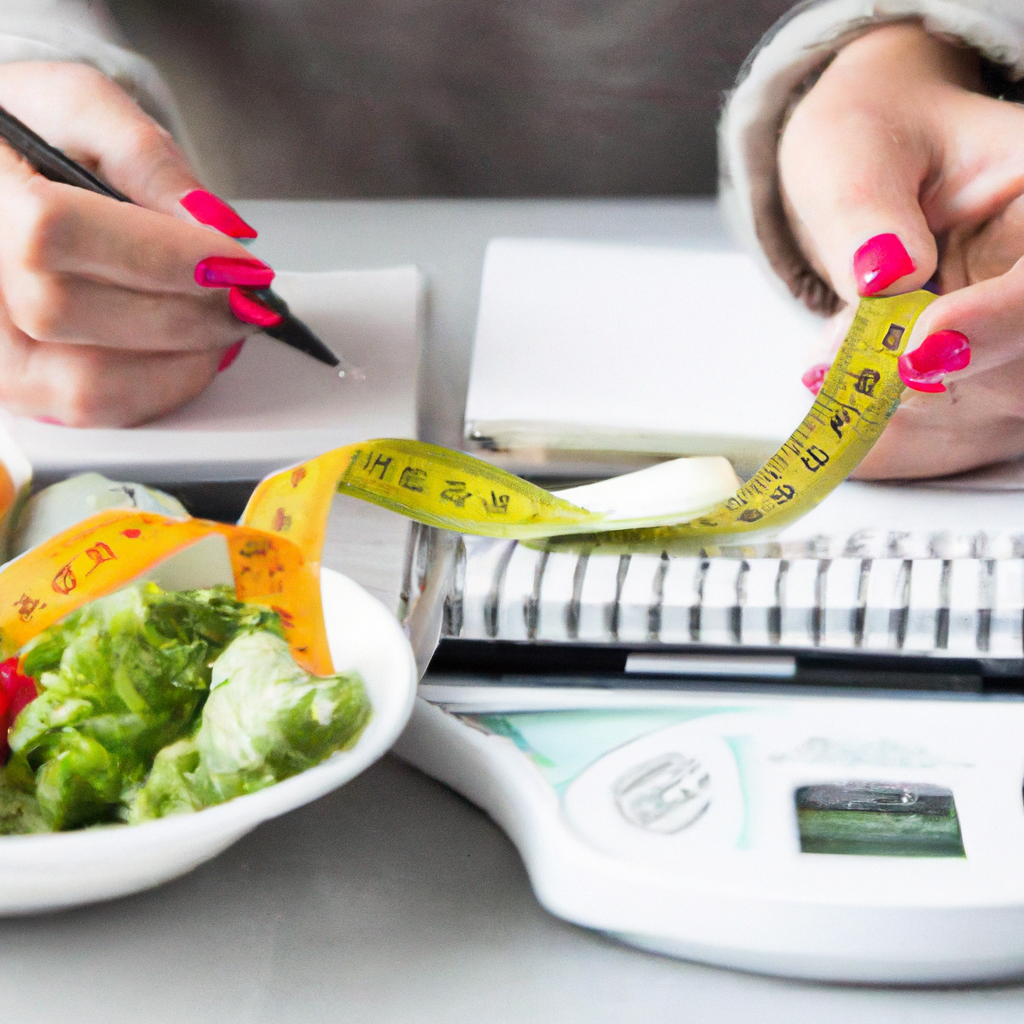Mastering Calorie Counting For Effective Weight Loss
It’s time to gain control over your weight loss journey, and mastering calorie counting is an essential stepping stone on this path. This guide will equip you with a practical, step-by-step approach to count and track your calorie intake. Furthermore, it will empower you with the knowledge to design your own calorie-aware meal plans, harnessing the power of informed eating to keep your weight loss goals within reach. So, if you’re ready to embrace a more strategic approach to weight loss, embark on this insightful journey that will transform the way you understand and manage your nutrition. Remember, calorie counting isn’t just a mechanic process, it’s your guiding light towards effective weight loss.

Understanding The Concept Of Calorie Counting
Counting calories is the cornerstone to an array of weight management plans. It is the process of tracking the calories in the foods you eat in a day. The logic behind it is very simple—you must burn more calories than you consume if you want to drop some weight.
Definition of Calorie Counting
Calorie counting, in the simplest of terms, is keeping a close tab on the number of calories you consume during a day. It is not just about counting, but gaining an understanding of the body’s energy needs and meeting them adequately without over-stepping.
Importance of Calorie Counting in Weight Loss
Calorie counting plays a pivotal role in weight loss. By keeping a track of the calories consumed and burnt, you ensure that your body acts as a calorie-burning machine rather than a calorie-storage facility. Also, this practice promotes mindful eating and helps you realize which foods offer better satiety with fewer calories.
How Calorie Counting Works
When you track your calorie intake, it encourages you to make healthier choices. You start avoiding calorie-dense but nutrient-poor foods, and instead opt for lower-calorie nutrient-rich options. This shift not just aids in weight loss, but also works wonders for your overall health.
Know Your Daily Calorie Needs
Before launching into calorie counting, it’s crucial to know the daily calorie needs of your body. Two key measurements would help you here – the Basal Metabolic Rate (BMR) and the Total Daily Energy Expenditure (TDEE).
Basal Metabolic Rate (BMR)
Your BMR is the number of calories your body needs to perform basic functions like breathing and maintaining body temperature. This rate varies with factors such as age, weight, height, and gender.
Total Daily Energy Expenditure (TDEE)
TDEE includes your BMR and the extra calories your body burns due to physical activity. This computation gives you a better idea of how many calories you should intake to maintain, lose, or gain weight.
Knowing Your Calorie Deficit
To lose weight, you should strive to have a calorie deficit – consume fewer calories than your TDEE. Generally, a daily calorie deficit of 500 calories may lead to a healthy weight loss of around 1 pound per week.
Tools To Assist With Calorie Counting
The journey of calorie counting is much easier with the right tools. Apps, food scales, and nutrition labels are your three main aids in this process.
Calorie Counting Apps
Thanks to technology, there are now handy apps to help you log in and track your food and calories effortlessly.
Food Scales
Investing in a good food scale ensures more accurate measurements of your food portions, and thus, a precise calorie count.
Nutritional Labels
Nutrition labels on food packages give you detailed information about calories, portion sizes, and nutrient content. It’s crucial to get into the habit of reading these before you consume any packaged food.

How To Count Calories In Your Meals
Here comes the nitty-gritty of calorie counting – the actual process of counting the calories in your meals.
Identify The Nutrition Content
The first step is to identify the nutritional content of every ingredient in your meal. By adding up the calories from each ingredient, you get the total calorie count of the meal.
Measuring Portion Sizes
Next, measure the portion size you intend to eat. Be honest—undereating or overeating may hinder your weight loss plans.
Use Apps To Calculate Calories
Use your chosen calorie counting app to do the math for you. This process is often as simple as inputting your food & portion sizes and letting the app do the work.
Calorie Counting In Home Cooked Meals
Home cooked meals offer a certain control over ingredients and portion sizes, but calorie counting here requires a slightly different approach.
Source Recipes that offer Nutritional Information
Go for recipes that offer nutritional information per serving. This will give you a clear idea of the calories you are ingesting with each meal.
Measure All Ingredients
Measure all ingredients accurately to ensure the nutritional information provided matches your actual intake.
Divide Total Meal Calories By Serving Sizes
Once you have the total calorie count for the full recipe, divide it by the number of servings. This gives you the calorie count per serving.
Eating Out While Calorie Counting
Eating out creates its own challenges when it comes to calorie counting. However, with smart choices and strategies, these challenges are not insurmountable.
Use Menu Nutrition Information
Many restaurants now provide nutritional information for their dishes. Use this to your advantage when choosing what to order.
Portion Control
Remember, restaurant portions tend to be larger than what constitutes a normal serving. Split your meal into smaller portions or take some home for later.
Smart Choices When Eating Out
Choose dishes that are grilled, steamed, or baked instead of fried. Opt for whole grains, fruits, vegetables, lean proteins, and avoid creamy sauces and desserts.
Exercise And Calorie Counting
Exercise is an essential element of a weight loss plan. By burning calories, you increase your calorie deficit and expedite your weight loss journey.
Understanding Calories Burned During Exercise
Different exercises burn different amounts of calories. High-intensity exercises such as running or cycling tend to burn more calories than low-intensity ones like walking or yoga.
Factor Exercise Into Daily Calorie Count
Add the calories burnt through your workouts into your daily calorie count. This helps you strike a balance between the calories you consume and the ones you burn.
Staying Motivated to Exercise
Staying motivated is a challenge in itself. Mixing different types of exercises, setting realistic goals, and rewarding yourself on reaching these goals could be helpful ways to stay on track.
Overcoming Challenges of Calorie Counting
Like all weight loss strategies, calorie counting comes with its fair share of challenges. Yet, with correct strategies, you can easily overcome these obstacles.
Addressing Lack of Precision
Calorie counting isn’t always 100% precise. But, remember it’s about creating an overall calorie deficit rather than getting too hung up on individual calorie counts.
Dealing with Hunger Pangs
Restricting calories can come with hunger pangs. To deal with this, focus on filling your plates with high-volume, low-calorie foods like vegetables and lean proteins which keep you full for longer.
Staying Consistent with Calorie Counting
Consistency is key in calorie counting. But don’t get disheartened by occasional slip-ups. Remember, it’s better to be consistently good rather than occasionally perfect.
Meal Planning For Effective Calorie Counting
Meal planning is an incredibly efficient tool when you’re working on calorie counting.
Why Meal Planning is Important in Calorie Counting
By planning your meals in advance, you have control over the calories you’ll be consuming, ensuring that no last-minute unhealthy choices throw your diet off track.
Tips for Healthy and Low-Calorie Meal Planning
Start by creating a menu. Choose nutrient-dense, low-calorie foods and balance each meal with adequate proteins, carbs, and fats. Preparing meals in batches can also save time and effort during the week.
Maintaining a Balanced Diet while Calorie Counting
Calorie counting isn’t just about eating lesser; it’s about eating smarter. Ensure your diet contains a balance of macro and micronutrients to keep you healthy and energized.
Monitoring Your Progress
Finally, keep a constant watch on your progress to keep yourself motivated and make necessary adjustments to your plan as required.
Weight Loss Progress with Calorie Counting
Weighing yourself consistently can give you a good idea of your progress. Remember, healthy weight loss is typically slow and steady, so don’t get disheartened by small numbers.
Staying on Track
Track your food intake, exercise routine, and weight changes regularly. This not only helps you stay on track, but these records often provide the motivation to keep going.
Adjusting Caloric Intake as Needed
Each body reacts differently to calorie deficits. As you lose weight, your TDEE decreases, so you may need to adjust your caloric intake over time.
In conclusion, mastering calorie counting might feel overwhelming at first, but with time, it becomes an empowering tool in your weight-loss journey. Remember, consistency is key, and weight loss is a marathon, not a sprint. Now armed with a better understanding of calorie counting, go set your goals and start your weight loss journey with confidence!


Pingback: How To Incorporate Treats Into A Healthy Diet Without Derailing Weight Loss
Pingback: Count To Lose: The Importance Of Tracking Calories For Weight Loss Success
Pingback: Prep & Prosper: The Weight Loss Benefits Of Meal Prepping